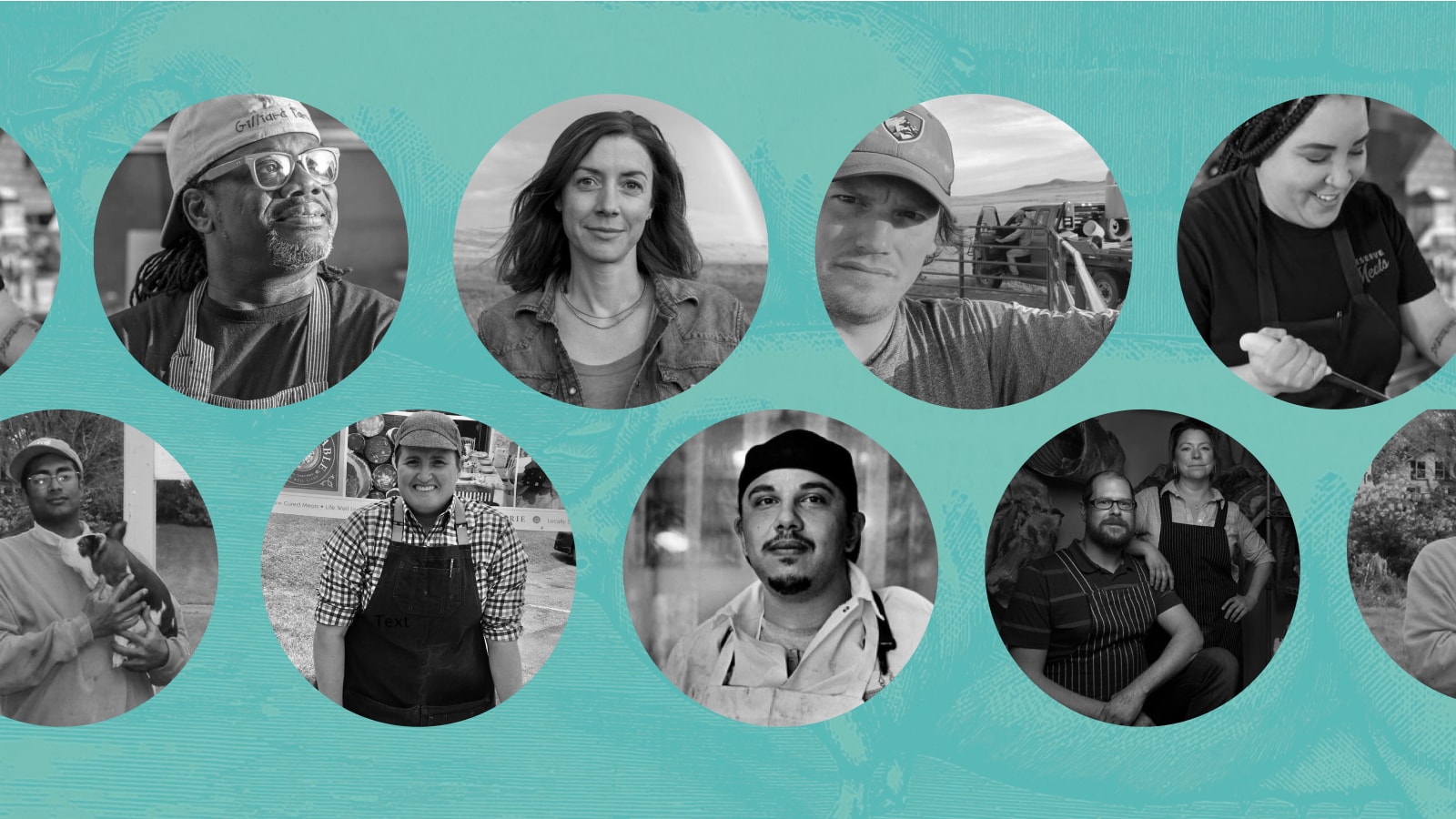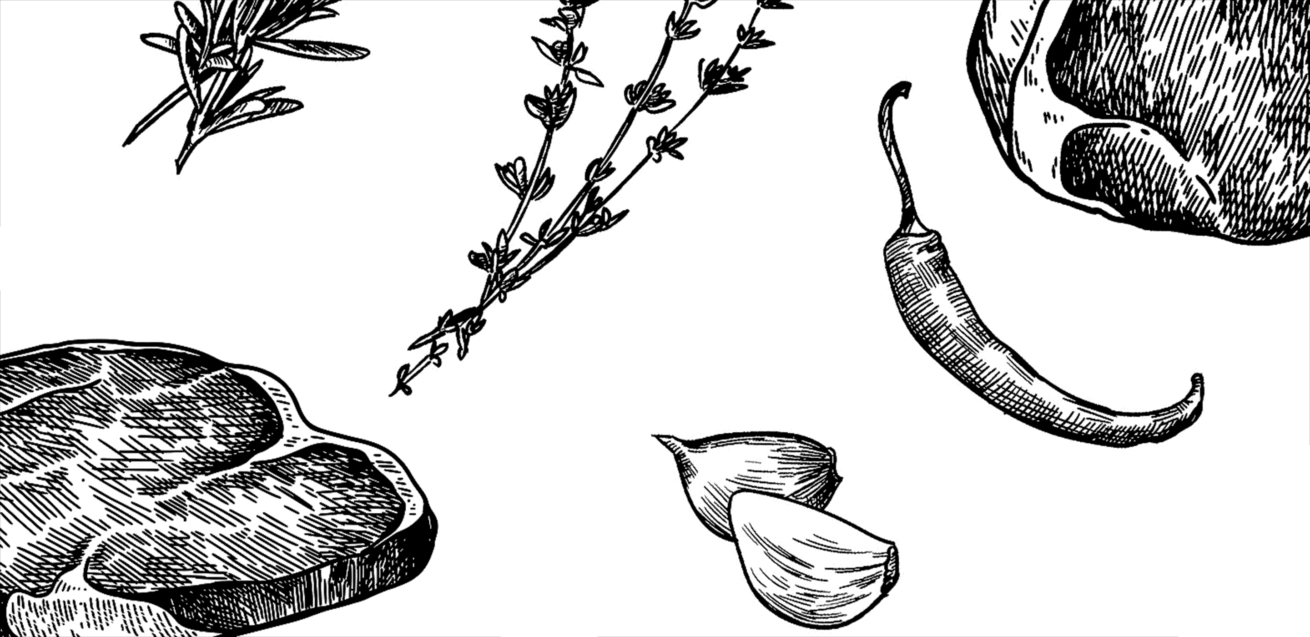Good Meat BreakdownGood Meat® Snapshots
Zach Ducheneaux


Zach Ducheneaux lives and works on the Cheyenne River Sioux Reservation in South Dakota. There, with his brothers and his kids, he operates DX Ranch. The Ducheneaux family has been ranching on this place since Zach’s dad bought it from Grampa Ducheneaux in the late 60's.
Grampa had been operating the ranch since the 1920s. As they began to transition to beef production and away from selling live cattle, they planned to offer both grain- and grass-finished beef. But their customers, mostly local residents and fellow Tribal members, quickly began to favor the grassfed beef. Recently, his daughter, Kelsey, has done the work to move their ranch into direct-to-consumer grassfed beef through DX Beef LLC. DX Ranch sells their beef by the quarter for the most part, although some sales are by the cut. DX Beef uses the Barn2Door platform for online sales, but Zach says word of mouth remains the best advertisement and marketing tool. Until recently, Zach was also the executive director of the Intertribal Agriculture Council (IAC). “The IAC provides technical assistance in all aspects of the agriculture and food system at no cost to the producers,” Zach says. “The work we are doing in reinventing agriculture finance is certainly the most important. Until we build a way to liberate more production income away from extractive forces, we will continue to see our producers captive to the commodity meat system.” In 2021, Zach stepped down from his position as executive director to become the Administrator of the U.S. Farm Service Agency, part of the U.S. Department of Agriculture.
How do you define your Good Meat® values?
Good Meat values, like healthy food, should be defined holistically. It's not just about nutrition, or the environment, or the economy. It should be defined as a nutritional product that provides equitable economic benefits to all stakeholders, in a manner that allows for thoughtful choices about production and consumption.
Why is being a Good Meat® advocate important to you?
It is our goal to illustrate that there is enough room in the system for the producer and consumer to receive value, once you take out the extractive forces. We want to provide a quality, affordable product to our fellow Tribal members, and if there's any leftover, we'll export it.
Why did you become a Good Meat® producer?
There are many reasons. First and foremost: to give back to our community. We have the honor of access to the lands of our Tribe to grow something. If we don't try to feed our Tribe, by virtue of that access, what is the point? Second, it's easier on the animals, and part of being a good resident of this planet is caring about the other creatures on it. I feel poorly every time I have to sell an animal at a livestock auction. Imagine how they feel. Third, it's easier, and more rewarding for the producer. By handling your animals in a manner that is more comfortable to them, you are forced to slow down, which gives you a chance to enjoy the time, instead of treating it like a chore.
I became a Good Meat producer by contemplating the systems we're operating within, and wondering “what if.” I grew up craving that same oversized, overfed, beefsteak that the NCBA (National Cattlemen’s Beef Association) and CAB (Certified Angus Beef) would have us believe is the ideal. As I began to learn more about the biology of diversity, bioavailability of nutrients, and the role of chronic inflammation and unprocessed stress, it was a natural evolution.
What is one thing you wish more consumers knew about raising livestock for food?
The last thing producers want to see, is a truckload of their weaned animals leaving their place for a feedlot or livestock market. The commodity ag system has created this reality, not the producers. Many of us would much rather be selling the meat from mature animals that have lived on grass their entire life, being thoughtfully cared for and harvested.
What meat, or meat dish, do you eat most regularly and what do you eat for a special occasion?
My favorite meal is a 6-8 oz. grass-fed burger, fried in butter, with a hint of salt in a cast iron pan, with baked potatoes from my daughter Kelsey's garden
What are the biggest challenges you face as a meat producer and/or as an advocate for a better food system?
I’m challenged by the fact that every system is perfectly designed to get the results it gets. Anonymity between the producer and consumer, between the producer and potential investors; those are products of this system that keep producers on a razor thin margin. Those who designed the system don't want to see it changed, but we must change it.
Good Meat® Snapshot
Popular Links

Let's do some good!
Sign up for our newsletter. We’ll keep you informed and inspired with monthly updates.